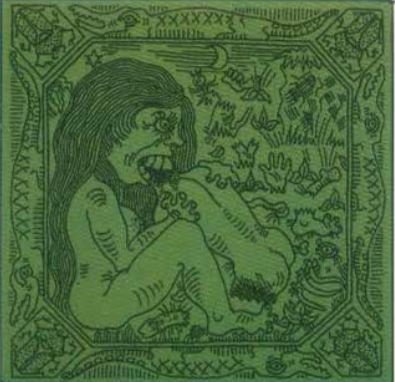The Banshee of Tar River, North Carolina
Centuries ago during the American Revolutionary War, legends say a terrifying wailing spirit known as a banshee haunted the banks of the Tar River in North Carolina. But is any of it real and can we use history to track what parts of the legend actually happened?
The Legend of the Tar River Banshee
In the midst of the American revolutionary war, many British colonists were seen as rebels by the British forces also known as red coats. Any colonists from Britain who wasn’t loyal to the crown and came face to face with a group of red coats had their property seized. Depending on who led the soldiers, the colonists could be attacked and beaten or, in rare cases, killed.
In 1780, one native Englander named Dave Warner was well aware of the dangers he faced if a group of red coats discovered he was no longer loyal to the crown. Despite this, he set up a flour mill near the Tar river in North Carolina in order to supply the colony’s militia with food.
As word spread of his intentions to help the militia, a man from a nearby town came by to thank him and offer a warning. He told Dave that on several nights in the past the pained screams of a woman were heard along the river. On full moons, everyone knew to stay away from Tar River as the water would flow black and a terrifying spirit of death, known as a banshee, would look for victims.
Dave thanked the man for the warning but he believed as he was a peaceful soul, the banshee would leave him be. Luckily for Dave, it appeared he was right. In the following year, though he heard the screams and wails of the Banshee, she never attacked him.
In August of 1781, the same man who a year prior warned Dave of the Banshee, arrived with more thanks and another warning. This time the threat was human as the man told Dave that British troops, who knew he was helping the militia, would soon pass by the area and would have no qualms about killing him.
Once again, Dave displayed no fear and even took pleasure in the fact he could fight off some red coats.
A few days later, a group of five red coats arrived and they violently beat Dave for what was perceived as treason. The redcoats dragged Dave to the river to drown him but Dave warned them of the banshee. He told them if they kill him, they will be cursed and the banshee will come for them the next time the river ran black.
Though they hesitated, the redcoats eventually tied Dave to a large rock and dumped him in the river. Moments later, a spine-chilling wail was heard from upstream as a fog rolled in from the trees. The red coats ran towards the mill and decided to barricade themselves inside for the night.
Hours later as the moonlight shone on the now black river, one of the men heard a scream and peered out the window. In the distance, he thought he saw a hooded woman gliding through the trees but she disappeared as he heard another scream. The man ran back to the group but found them all standing motionless as if they were in a trance. The man turned around and there she was.
The banshee Dave had warned them about was coming for their souls. All the men fell into a trance and mindlessly marched to the river. One by one they walked into the rushing black water and died as the wails of the banshee echoed through the night.
According to legend the banshee of Tar River still haunts the area and during full moons, if you hear her screams, she’s coming for your soul.
Other Versions
All other versions I’ve found of this legend follow the same plot points. Dave runs a mill, he’s warned of the red coats, they arrive and kill him, and they are killed by the banshee. These other versions only changed minor details; sometimes the mill Dave runs is flour, sometimes it’s a sawmill, and sometimes it’s unknown.
Other versions of the legend have the red coats laugh at Dave’s warning before they drown him while others have them debate heavily and pressured by their oncoming general, they kill him.
Finally, another detail often changed is how the red coats die; in one version they’re in a trance and drown themselves, while in others their general finds them all dead the following day. Sometimes it’s told with the general having heard the banshee screams and other times he has no idea what happened to them.
One last version has four of the five dying immediately while the remaining red coat runs. The next morning, the general finds him dead of fright in the same spot where they killed Dave.
But Did It Happen?
The events of the legend of the Tar River Banshee doesn’t appear to have actually taken place. Looking through the history of North Carolina, the history of the Tar River, a list of merchants and mill owners in the state, Western North Carolina A History by John Preston Arthur, and the history of the nearby town of Tarboro (at the time called Tawboro), there is no record of a Dave Warner or a mysteriously incident involving dead red coats in the area.
Revolutionary War
Since this legend supposedly took place during the revolutionary war, we have a pretty good idea of where the British troops were and what paths they took during the war. In 1780/81 there were a large number of British troops stationed in North Carolina under the direction of Charles Cornwallis but, they were far west of the 215-mile Tar River.
As Cornwallis was in charge of the troops in the Carolinas and they were already engaging in several battles in far west North Carolina in 1780, there would have been no general advancing west near the Tar River at the time.
We know in January of 1781 The Battle of Cowpens puts Cornwallis’s troops in South Carolina, hundreds of miles from Tar River. Months later in March, the Battle of Guilford Court House puts Cornwallis back in North Carolina but around 100 miles west of the Tar River.
For the next five months, Cornwallis and the red coats continue south and the Battle of Lindley’s Mill breaks out on September 13, 1781. This means at no point was the British army within 80-100 miles of the Tar River prior to September.
The map below from the Atlas of North Carolina (1967) shows Cornwallis and his troops marching through North Carolina, Lindley’s Mill is toward the center. Next to that map is the map of the Tar River superimposed over it.
Cornwallis’s march is displayed as the brown trail on both maps and Tar River is the northernmost river on the map to the right. (You can click the maps to enlarge them.)
The only time Cornwallis and the British army crossed the Tar River in 1781 is when they are marching toward Virginia after September. Putting all this together, I can safely say the Banshee of Tar River never existed.
Is it possible the story of British troops who attacked a sawmill owner happened at some point in the war? Possibly, but it doesn’t appear to have occurred on the shores of the Tar River.
The Banshee
Since I couldn’t find any record of the origin of this legend it’s more likely it was told orally over generations. Interestingly, the banshee is a female spirit, sometimes referred to as a fairy spirit, that originates in Irish and Celtic folklore and is not usually found in American folklore. During the 18th century, a large number of immigrants of Celtic descent settled in the colonies with an estimated 20,000 settling in North Carolina alone.
It’s possible that the Banshee legend mixed with local history and created this story. During the revolutionary war, there were many battles at various mills including in North Carolina. There was also a well-known loyalist who assisted Cornwallis named David Fanning who attacked colonists at Cross Creek in August of 1781.
It’s more likely the legend of the banshee of Tar River is folklore brought by those who settled in the colonies and, over generations, mixed with actual history. Despite this, some say that there is a banshee spirit haunting Tar River and if you hear her screams, you don’t have long left on this Earth.
Other Sources
Bartlett, Sarah. Guide To The World’s Supernatural Places. National Geographic, 2014
Learn a Little Bit of Everything!
Myths, Mysteries, & Monsters


















